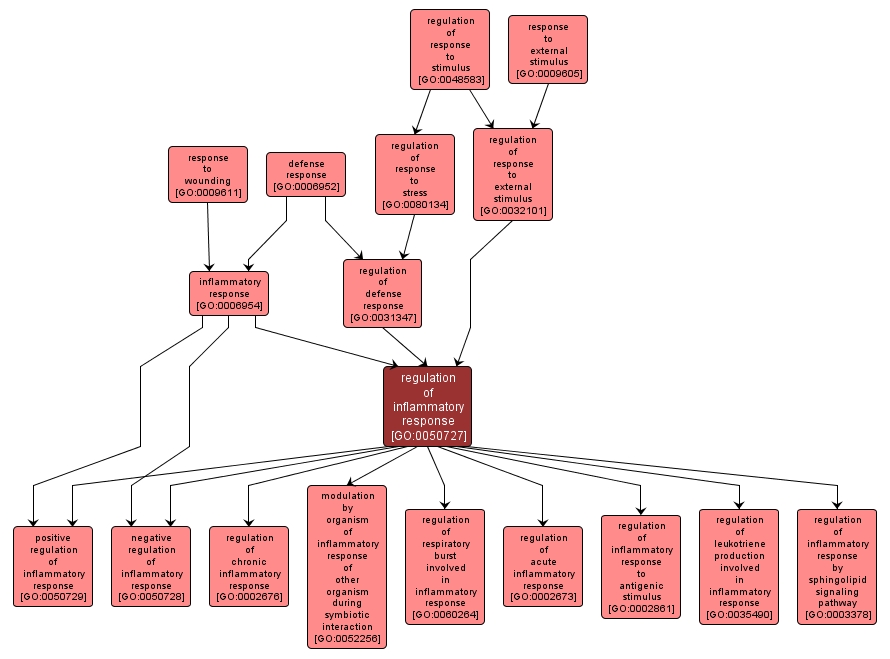GO TERM SUMMARY
|
| Name: |
regulation of inflammatory response |
| Acc: |
GO:0050727 |
| Aspect: |
Biological Process |
| Desc: |
Any process that modulates the frequency, rate or extent of the inflammatory response, the immediate defensive reaction (by vertebrate tissue) to infection or injury caused by chemical or physical agents. |
|

|
INTERACTIVE GO GRAPH
|














